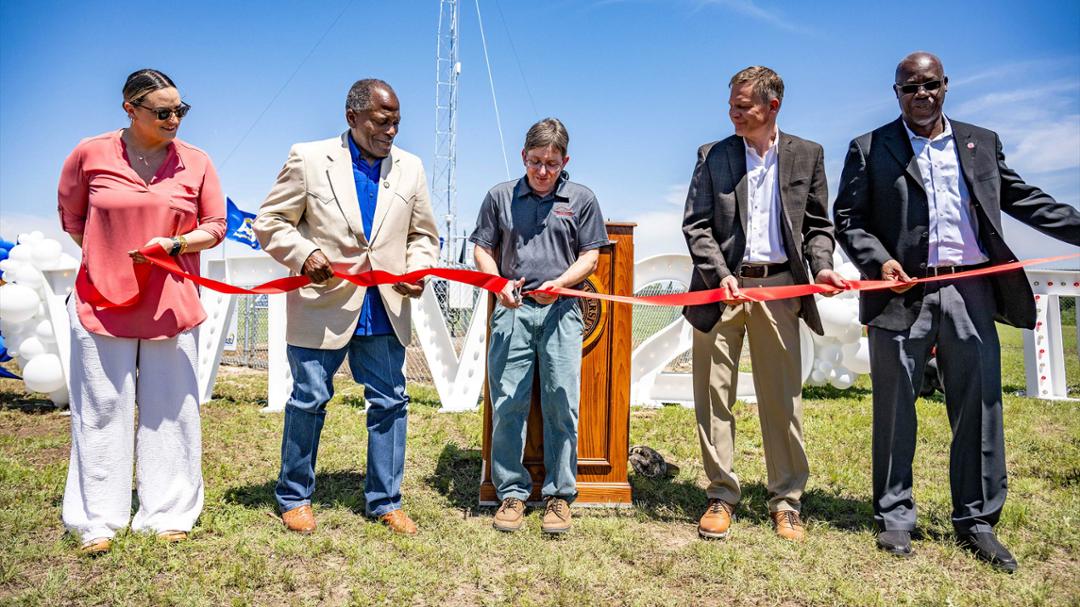The network’s latest station, established by the National Wind Institute, is located on the campus of Angelo State University, part of the Texas Tech University System.
Much like the Texas Tech University System itself, the breadth and reach of the West Texas Mesonet (WTM) has expanded to cover much of Texas west of Interstate 35.
On Monday, the National Wind Institute (NWI) at Texas Tech University marked a milestone anniversary at one of the system’s component schools.
The West Texas Mesonet commemorated its 25th anniversary by unveiling the 168th station in its network, cutting the ribbon on the latest station located at Angelo State University in San Angelo, which joined the Texas Tech University System in 2007.
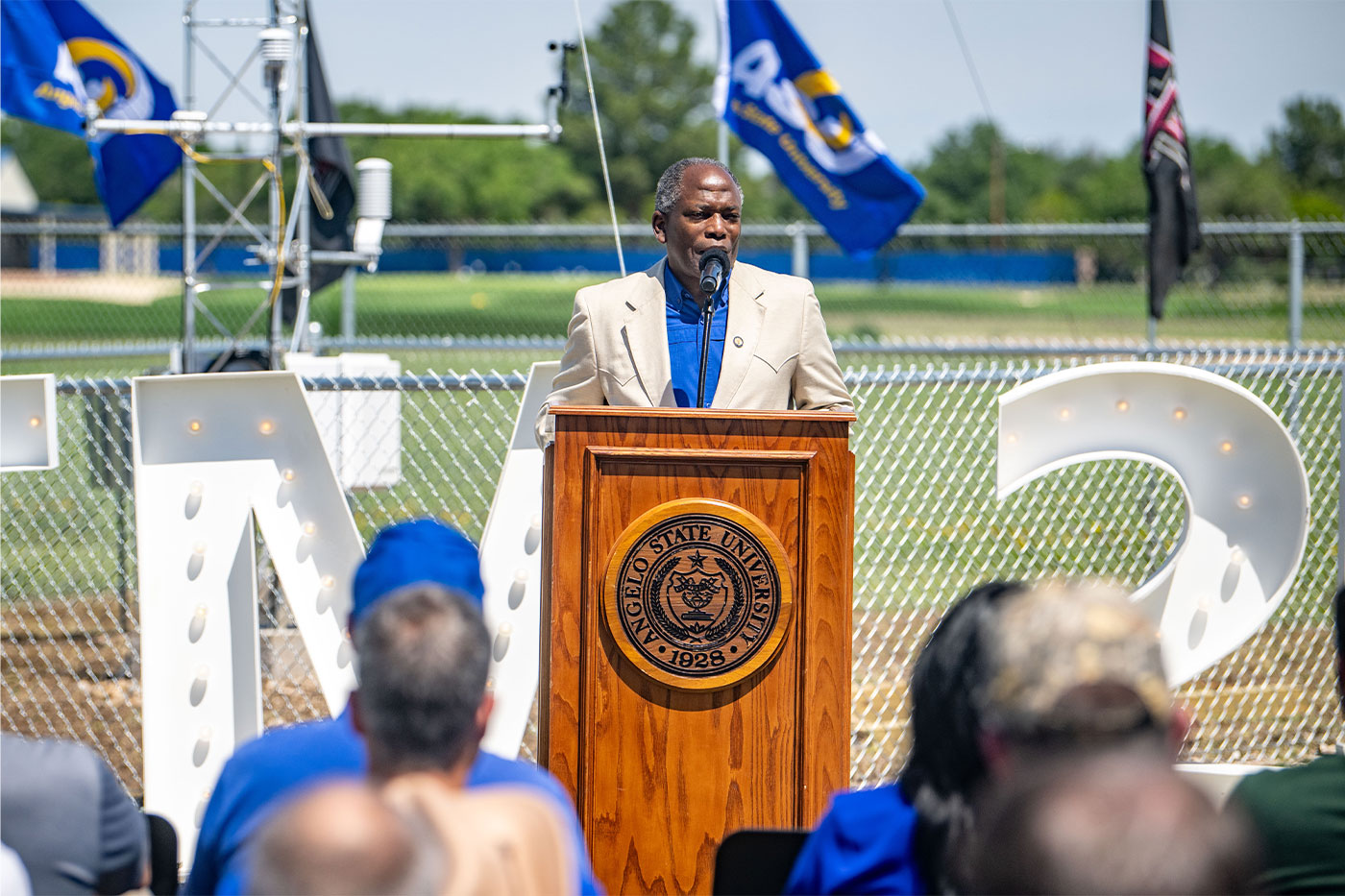
“It’s really difficult to imagine a more collaborative project than the West Texas Mesonet,” said John Schroeder, senior director of the NWI. “It’s only fitting that we celebrate the 25th anniversary with a new station and a new partner, Angelo State University. We look forward to continuing to grow the network through partnerships and expanding our impact for the citizens of Texas.”
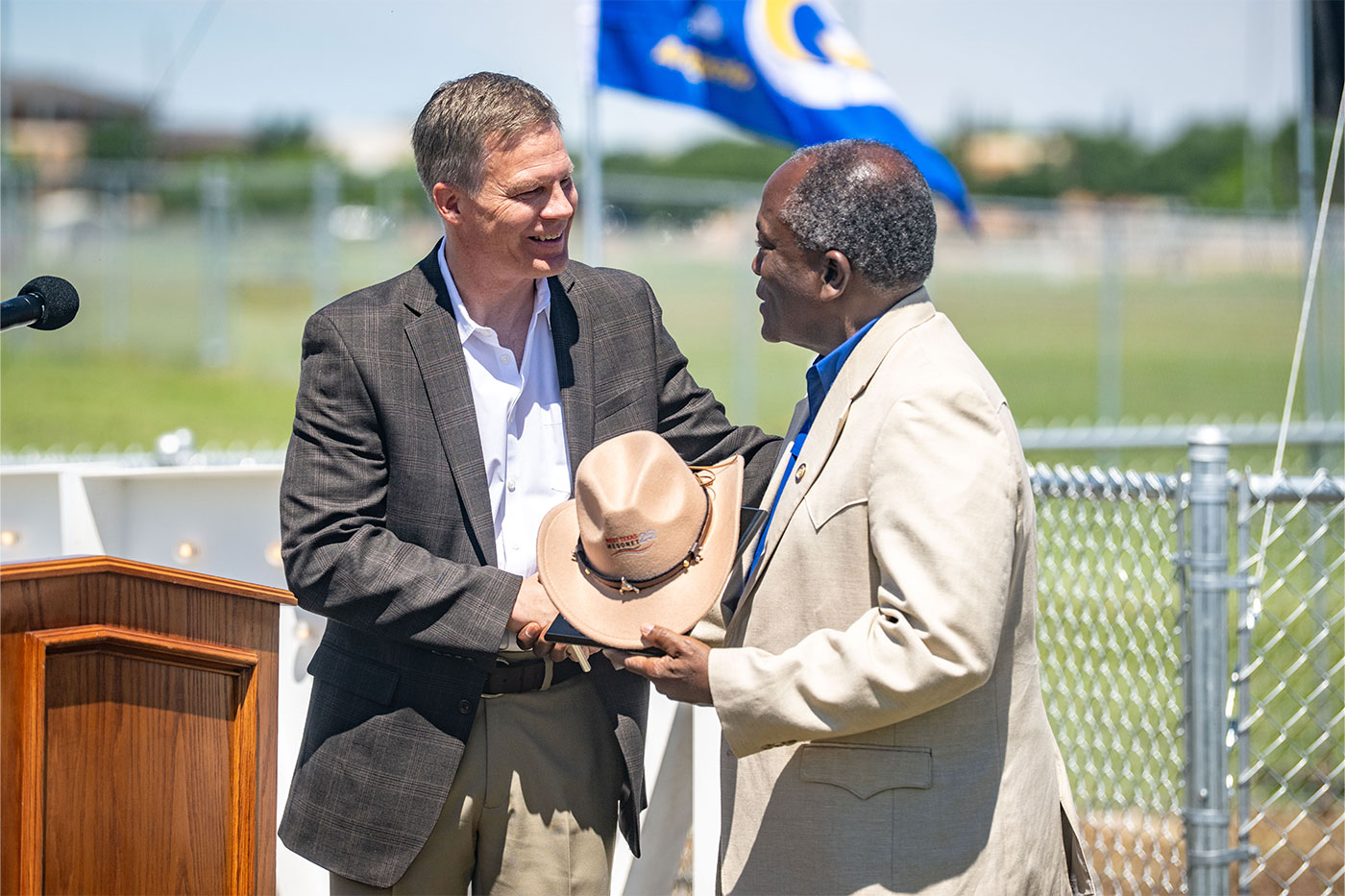
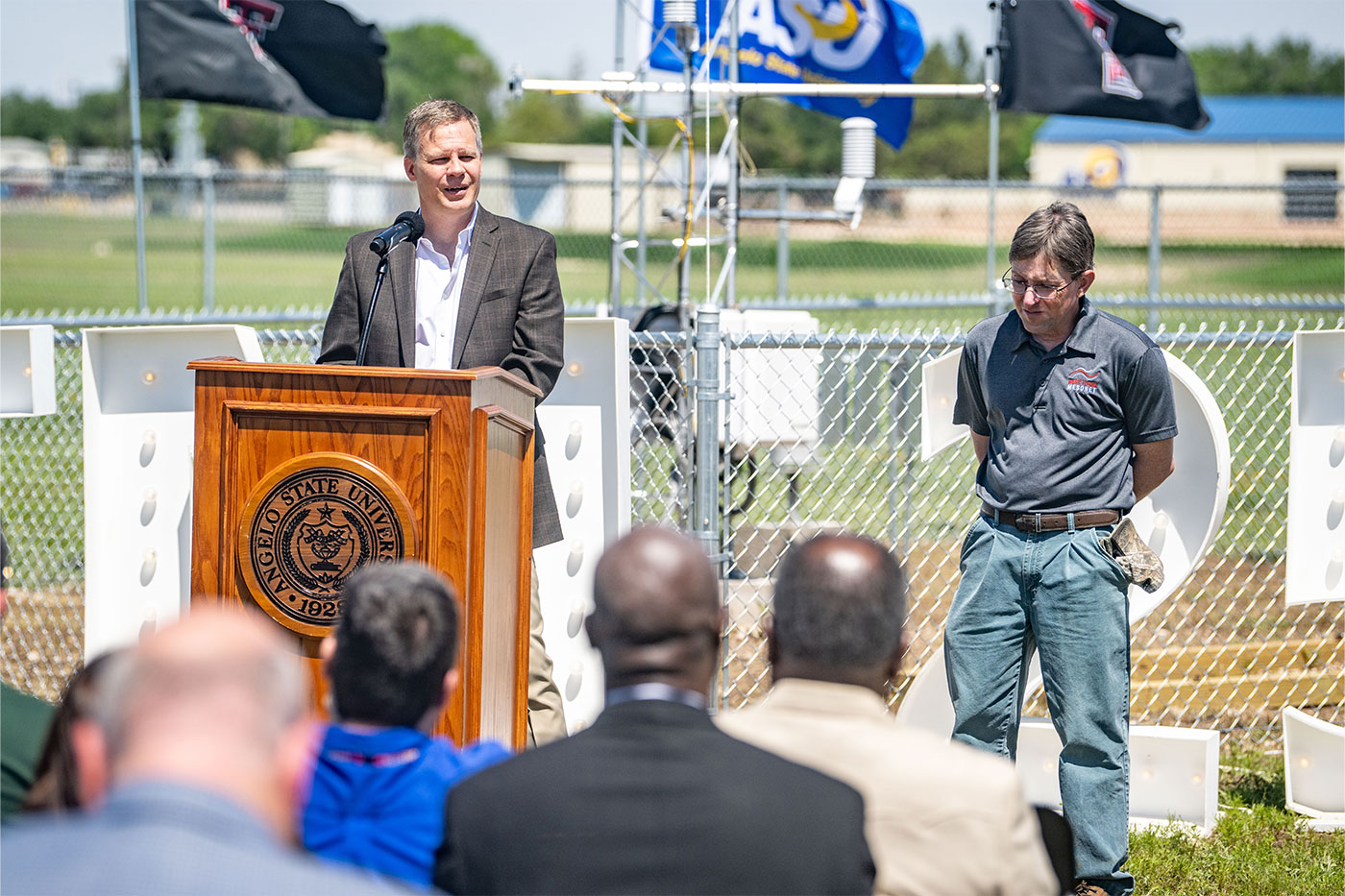
It is the fifth WTM site established on a college campus, joining Abilene Christian University (2024), Lubbock Christian University (2023) and New Mexico Junior College (2012) as well as the Texas Tech campus in Junction.
This is the fourth WTM site opened this year, joining Leila Lake, southeast of Amarillo, Marathon, north Big Bend National Park, and the Davis Mountains, southwest of Pecos, as those that have come online in 2025.
The site is located northwest of Foster Field at First Community Credit Union Stadium, home of ASU baseball. It is San Angelo’s second station in the WTM network, joining the station established in 2008 just west of Highway 87 north of Fisher Lake.
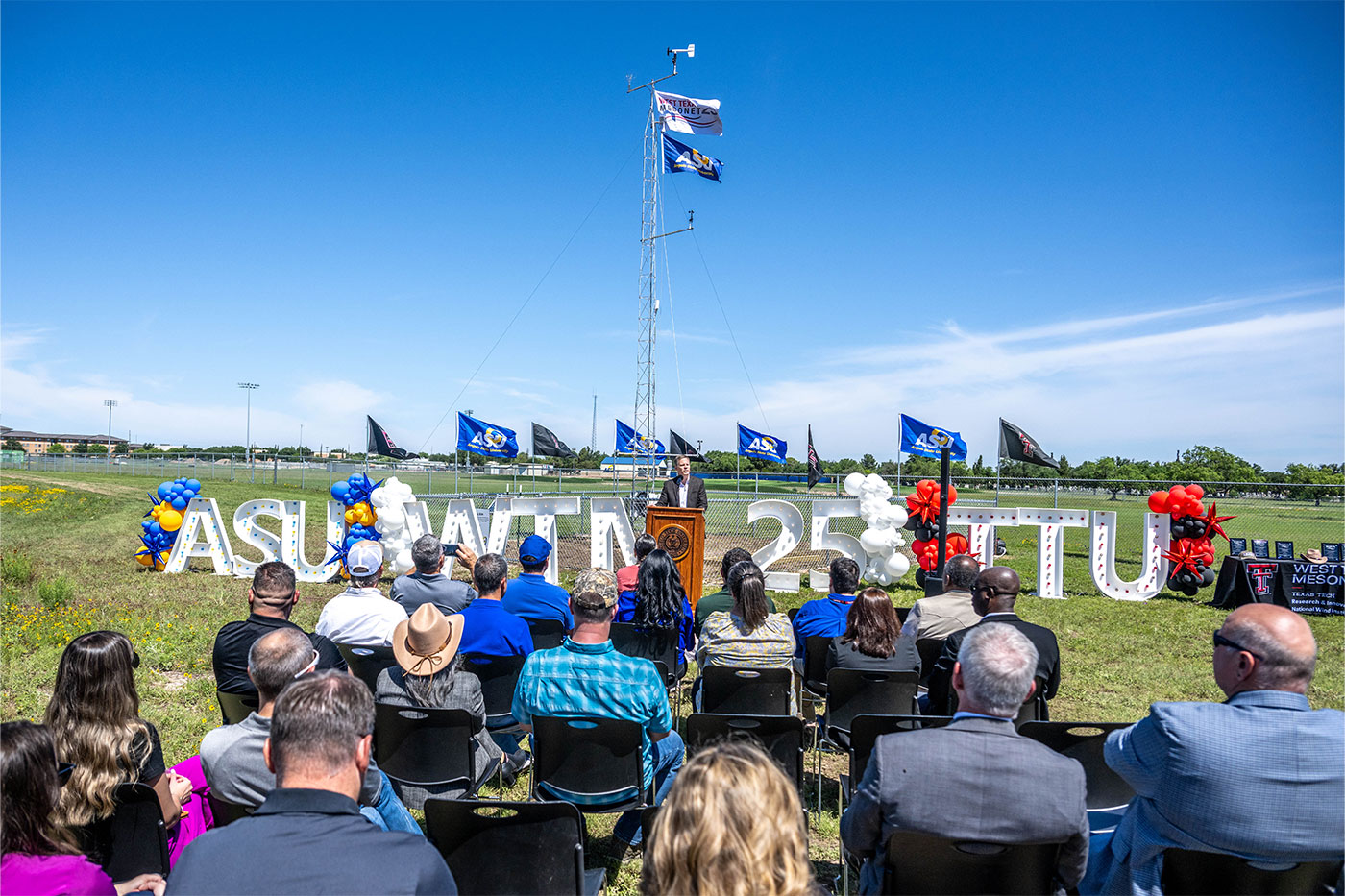
“Angelo State University is thrilled to have this opportunity to partner with Texas Tech and the National Wind Institute to serve the people of San Angelo with this weather monitoring station,” said Sam Spooner, director of environmental health, safety and risk management at Angelo State. “The data provided by the new mesonet station will enable our meteorologists, such as our partners at the San Angelo National Weather Service, to develop forecasts more accurately for Angelo State and communities throughout our region.”
A joint venture started in 1999 between the Texas Department of Economic Development and the NWI, the WTM has stations located throughout West Texas and Eastern New Mexico, from the top of the Panhandle to Big Bend National Park and from Sierra Blanca to Goldthwaite, spanning almost 100 counties. The first station was completed in 2000 and now includes three Sonic Detection and Ranging (SODAR) units, one Light Detection and Ranging (LiDAR) unit and 168 surface stations.
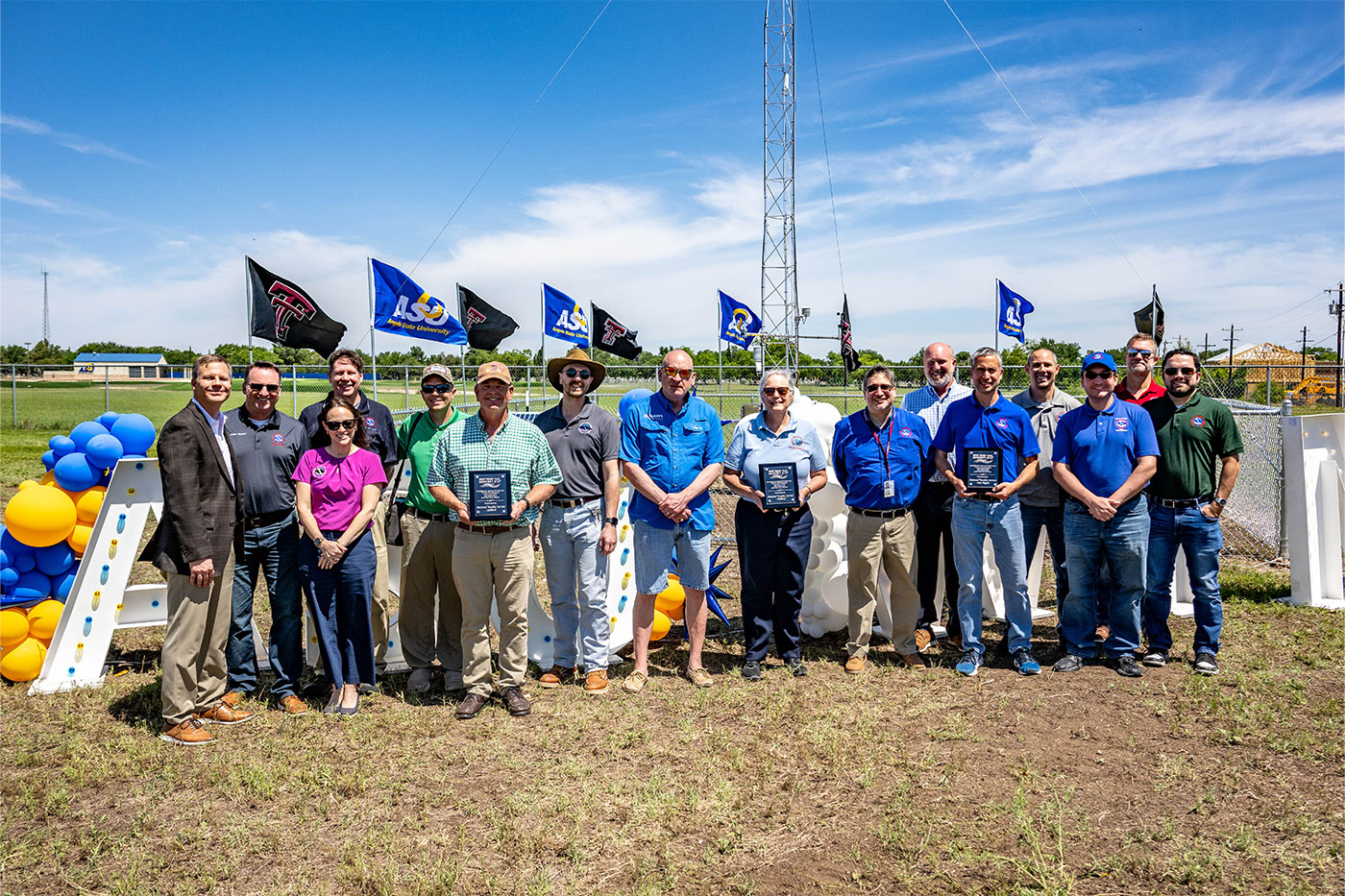
This station at Angelo State continues to expand the ability for researchers, forecasters and individuals in the agriculture industry to have the most up-to-date weather information available, which in turn helps protect lives and reduce losses due to severe storms.
The mesonet sites monitor 29 different parameters to aid in the evaluation of weather conditions at different heights, such as temperature, wind, relative humidity, rainfall, soil temperature, soil moisture, solar radiation, barometric pressure and more. Accurate and advanced weather intel has become vital in helping residents and industry leaders adapt to ever-changing weather conditions, and the WTM makes forecast and warning operations much more timely.
Each mesonet site costs close to $25,000 to install, which also includes various recurring fees for maintenance and communications.

